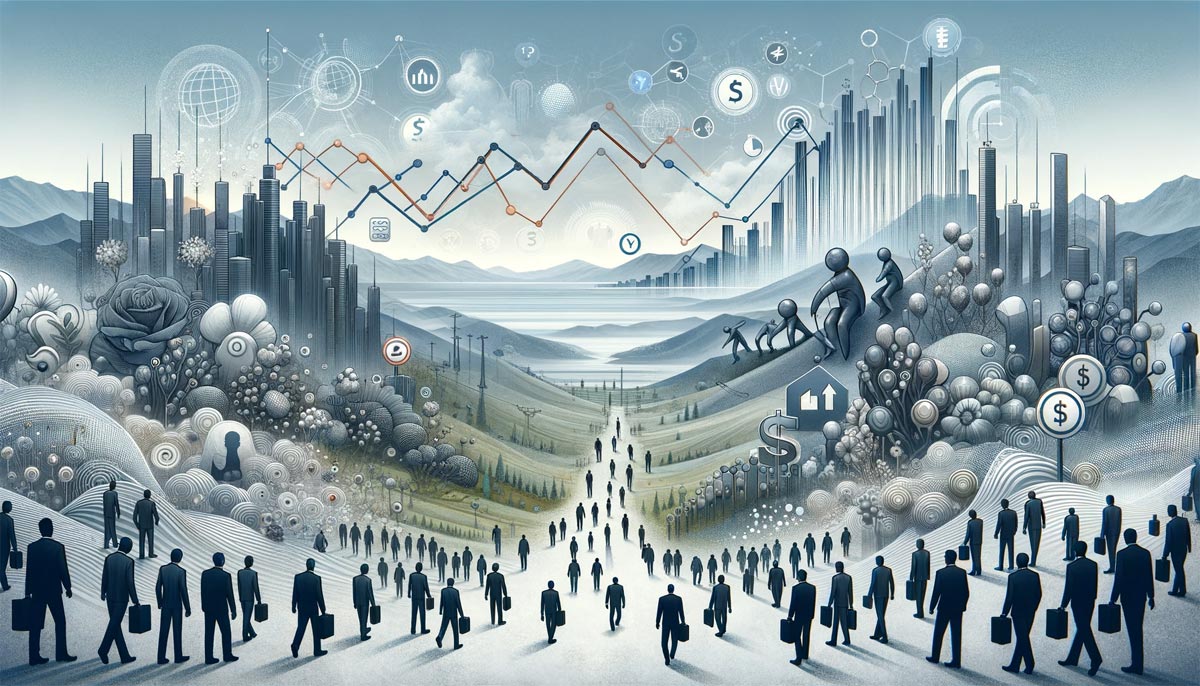
Impact of Unemployment Rate on Economic Health: An In-depth Analysis
In the intricate web of economic indicators, the unemployment rate stands out as a critical metric reflecting the health of a country's labor market and, by extension, its overall economic vitality. Understanding how shifts in unemployment rates influence economic outcomes is essential for policymakers, economists, and the public at large. This comprehensive analysis delves into the multifaceted impact of unemployment on economic growth, consumer spending, inflation, and fiscal policies, providing valuable insights into the dynamics between joblessness and economic health.
Understanding Unemployment and Its Economic Significance
Unemployment, simply put, refers to the percentage of the labor force that is actively seeking work but unable to find employment. Its significance as an economic indicator cannot be overstated, as it provides a clear picture of the labor market's health and, indirectly, the economic activity level within a country. High unemployment rates are often indicative of economic downturns, whereas low rates suggest a thriving economy.
The Direct Impact on GDP Growth
Gross Domestic Product (GDP) growth is a primary measure of economic health, representing the total value of goods and services produced over a specific period. Unemployment rates and GDP growth share a close relationship, often referred to as Okun's Law, which posits that a rise in unemployment is inversely related to GDP growth. Essentially, as more individuals lose their jobs, consumer spending decreases, leading to a reduction in demand for goods and services, which in turn slows down economic growth.
Consumer Spending and Economic Activity
Consumer spending is the lifeblood of the economy, accounting for a significant portion of GDP in most countries. Unemployment adversely affects consumer confidence and disposable income, leading to reduced spending. This reduction in demand can trigger a domino effect, impacting businesses' revenue, leading to further job cuts, and exacerbating the cycle of economic downturn.
Inflation and Fiscal Policy Adjustments
The relationship between unemployment and inflation is traditionally explained by the Phillips Curve, which suggests an inverse relationship between the two. In periods of high unemployment, inflation tends to be lower due to decreased consumer spending. This scenario often prompts governments to implement expansionary fiscal policies, such as increased public spending and tax cuts, to stimulate economic activity and job creation.
Long-term Effects and Economic Recovery
The long-term effects of sustained high unemployment can be detrimental to economic health, leading to a decrease in potential GDP and an increase in social welfare costs. However, understanding the dynamics of the job market and implementing effective economic policies can facilitate a quicker recovery. Investing in education, training, and job creation programs can help reduce unemployment and promote sustainable economic growth.
Global Perspectives: Case Studies
Analyzing the response of different economies to changes in unemployment rates offers valuable lessons. For instance, during the 2008 financial crisis, countries that implemented comprehensive fiscal stimulus packages, such as China and Australia, experienced quicker recoveries in their labor markets and overall economies compared to those that opted for austerity measures.
Theoretical Frameworks and Expert Opinions
Economic theories, such as Keynesian economics, emphasize the importance of government intervention in reducing unemployment and stabilizing the economy. Experts argue that timely and targeted fiscal policies can mitigate the negative effects of unemployment, supporting not only those directly affected but also the economy at large.
Towards a Resilient Economic Future
Addressing unemployment is pivotal for economic stability and growth. Policies that focus on enhancing the skills of the workforce, encouraging innovation, and supporting sectors with high growth potential can create a more resilient and dynamic labor market. Moreover, international cooperation and exchange of best practices can enhance the global response to unemployment challenges.
Conclusion
The unemployment rate is a powerful indicator of economic health, influencing and reflecting a wide range of economic activities. Its impact on GDP growth, consumer spending, inflation, and fiscal policies underscores the interconnectedness of economic systems. By comprehensively understanding and addressing the causes and effects of unemployment, policymakers and economists can devise strategies that not only mitigate its negative impacts but also harness its potential as a driver for economic improvement and resilience.
This analysis aims to equip readers with a deeper understanding of the unemployment rate's role in the economy, fostering informed discussions and policy-making that promote economic health and stability.
Economics

